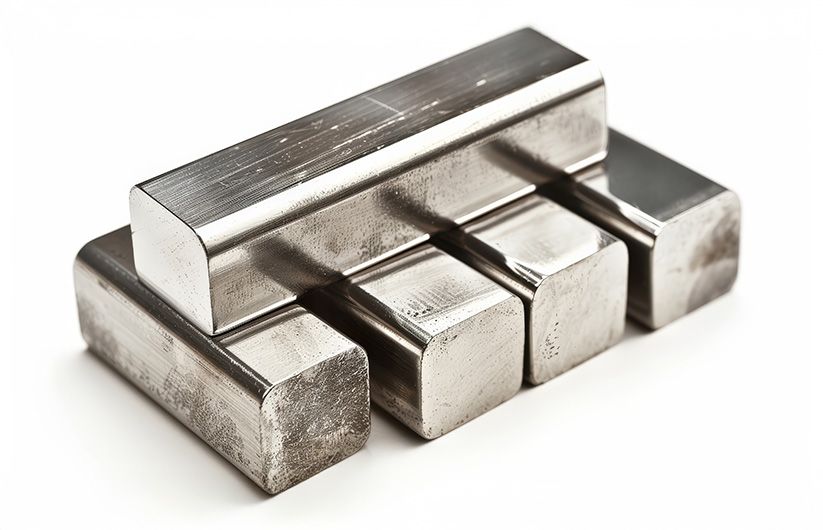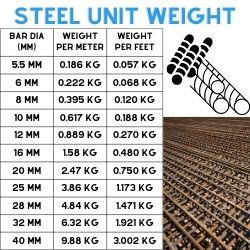Density of Steel: Complete Guide with Chart & Calculation
Understanding the density of steel is essential for engineering, manufacturing, and construction applications. Density is a material’s mass per unit volume, typically expressed in kg/m³ (kilograms per cubic meter) or lb/in³ (pounds per cubic inch). Since steel is used in everything from pipelines and structural frames to automotive parts and medical tools, its density helps in material selection, strength calculation, and shipping cost estimation.
For dimension and strength-based selection, check our flange weight calculator to find appropriate flange options compatible with these piping systems.
What is Density?
Density refers to the mass of a substance per unit volume. It is calculated using the formula:
Density Formula:
Density (ρ)=Mass (m)Volume (V)\text{Density (ρ)} = \frac{\text{Mass (m)}}{\text{Volume (V)}}Density (ρ)=Volume (V)Mass (m)
Units of Density:
- SI Unit: kg/m³ (kilogram per cubic meter)
- Imperial Unit: lb/in³ (pounds per cubic inch)
What is the Density of Steel?
Steel’s density depends on its chemical composition, mainly the iron-carbon ratio and the presence of alloying elements such as chromium, nickel, molybdenum, and copper.
Average Density of Steel:
- In kg/m³: ~7,850 kg/m³
- In lb/in³: ~0.284 lb/in³
Density of Mild Steel (MS)
Mild steel, commonly used in structural and piping applications, has relatively consistent density values across standard grades.
| MS Grades | Density in kg/m³ | Density in lb/in³ |
|---|---|---|
| ASTM A572 | 7,966 | 0.282 |
| IS 1239 / IS 3589 | 7,860 | 0.283 |
| IS 2062 | 7,850 | 0.283 |
| ASTM A36 | 7,800 | 0.281 |
Density of Alloy Steel (Low / Medium)
Alloy steels are categorized into low, medium, and high based on their alloy content. Their densities vary depending on the alloying elements used.
| Grades | Density in kg/m³ | Density in lb/in³ |
|---|---|---|
| Low Alloy Steel | 7,500 to 8,080 | 0.271 to 0.292 |
| Medium Alloy Steel | 6,600 to 7,860 | 0.238 to 0.284 |
| P9 Pipe (9 Cr-1 Mo Alloy Steel) | 7,850 | 0.283 |
| P11 Pipe (1-1/4 Cr-1/2 Mo Steel) | 7,850 | 0.283 |
Density of Carbon Steel Pipes
Carbon steels are used widely in industrial and pressure piping. The density can vary slightly by grade.
| Carbon Steel Grade | Density in kg/m³ | Density in lb/in³ |
|---|---|---|
| ASTM A53 Grade B | 7,850 | 0.283 |
| ASTM A106 Grade B | 7,860 | 0.284 |
Density of Stainless Steel
Stainless steels have higher alloy content and density due to chromium and nickel presence.
| Stainless Steel Grade | Density in kg/m³ | Density in lb/in³ |
|---|---|---|
| SS 304 | 7,930 | 0.286 |
| SS 316 | 8,000 | 0.289 |
| SS 410 | 7,750 | 0.280 |
| SS 430 | 7,700 | 0.278 |
Density of Duplex & Super Duplex Steel
These steels offer high corrosion resistance and strength and are denser than standard stainless steels.
| Grade | Density in kg/m³ | Density in lb/in³ |
|---|---|---|
| Duplex 2205 | 7,805 | 0.282 |
| Super Duplex 2507 | 7,805 | 0.282 |
Density of Nickel Alloys
Nickel-based alloys are dense and used in high-temperature and corrosion-resistant applications.
| Alloy | Density in kg/m³ | Density in lb/in³ |
|---|---|---|
| Inconel 625 | 8,440 | 0.305 |
| Monel 400 | 8,800 | 0.317 |
| Hastelloy C276 | 8,890 | 0.321 |
Other Metals Density Chart
| Material | Density (kg/m³) | Density (lb/in³) |
|---|---|---|
| Titanium Alloys | 4,500–4,850 | 0.163–0.175 |
| Copper | 8,960 | 0.324 |
| Copper Nickel (CuNi) | 8,940 | 0.323 |
| Brass | 8,400–8,700 | 0.303–0.314 |
| Aluminium | 2,700 | 0.097 |
How to Calculate Density of Steel
If you have the mass and volume of any steel object, you can use this formula: Density (ρ)=Mass (kg)Volume (m³)\text{Density (ρ)} = \frac{\text{Mass (kg)}}{\text{Volume (m³)}}Density (ρ)=Volume (m³)Mass (kg)
Example:
If a steel block weighs 78.5 kg and its volume is 0.01 m³: ρ=78.50.01=7,850 kg/m³\rho = \frac{78.5}{0.01} = 7,850 \text{ kg/m³}ρ=0.0178.5=7,850 kg/m³
Steel Density in lb/in³ and g/cm³
| Unit | Density Value |
|---|---|
| kg/m³ | ~7,850 |
| lb/in³ | ~0.284 |
| g/cm³ | ~7.85 |
FAQs on Density of Steel
1. What is the exact density of mild steel?
The density of mild steel typically ranges from 7,800 to 7,966 kg/m³ depending on the grade.
2. How does carbon content affect steel density?
Higher carbon content slightly increases steel density due to denser atomic packing.
3. Is stainless steel denser than mild steel?
Yes, stainless steel has a higher density, usually around 7,900 to 8,000 kg/m³.
4. What is the unit weight of steel?
Unit weight of steel is approximately 78.5 kN/m³ or 7850 kg/m³.
5. Which type of steel has the highest density?
Nickel alloys and stainless steels like SS 316 or Inconel tend to have the highest densities.
6. What is the lightest metal vs steel?
Aluminum is much lighter than steel, with a density of only 2,700 kg/m³.
Conclusion
Knowing the density of steel helps engineers and manufacturers make accurate calculations for design, load, and transport. From mild steel to stainless steel and exotic alloys like Inconel and titanium, each material’s density plays a role in its application. Use the above tables and formulas as a quick reference for your next project.
Also read: Slip On Flange – Uses, Types & Dimensions
Also Read: ISMC Weight Chart & Channel Weight Calculator – The Ultimate Guide to calculate steel channel weights with precision for your structural projects.


